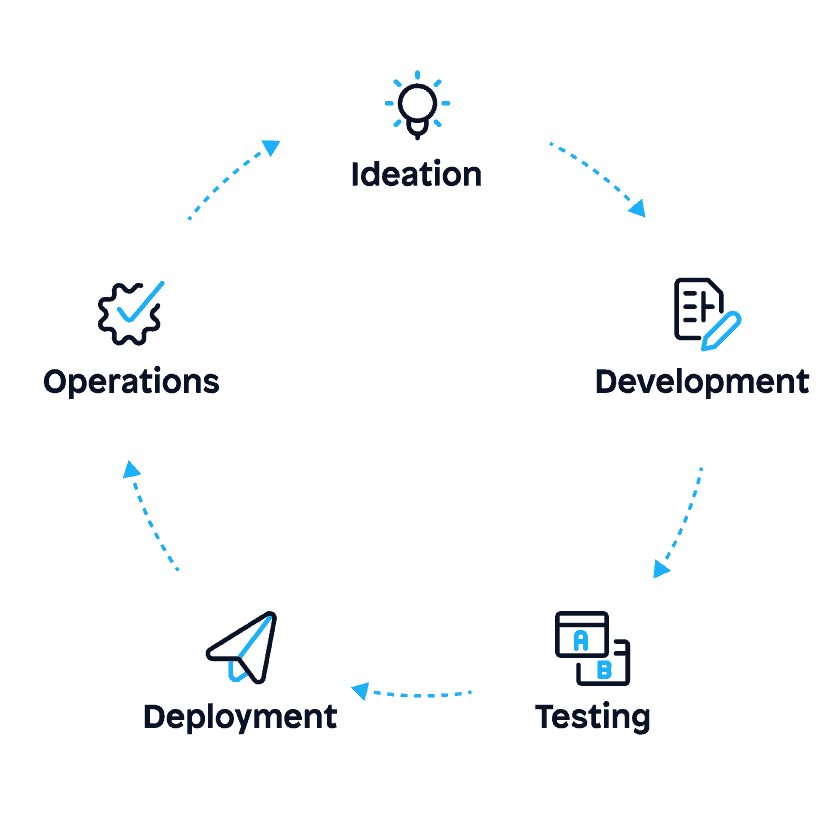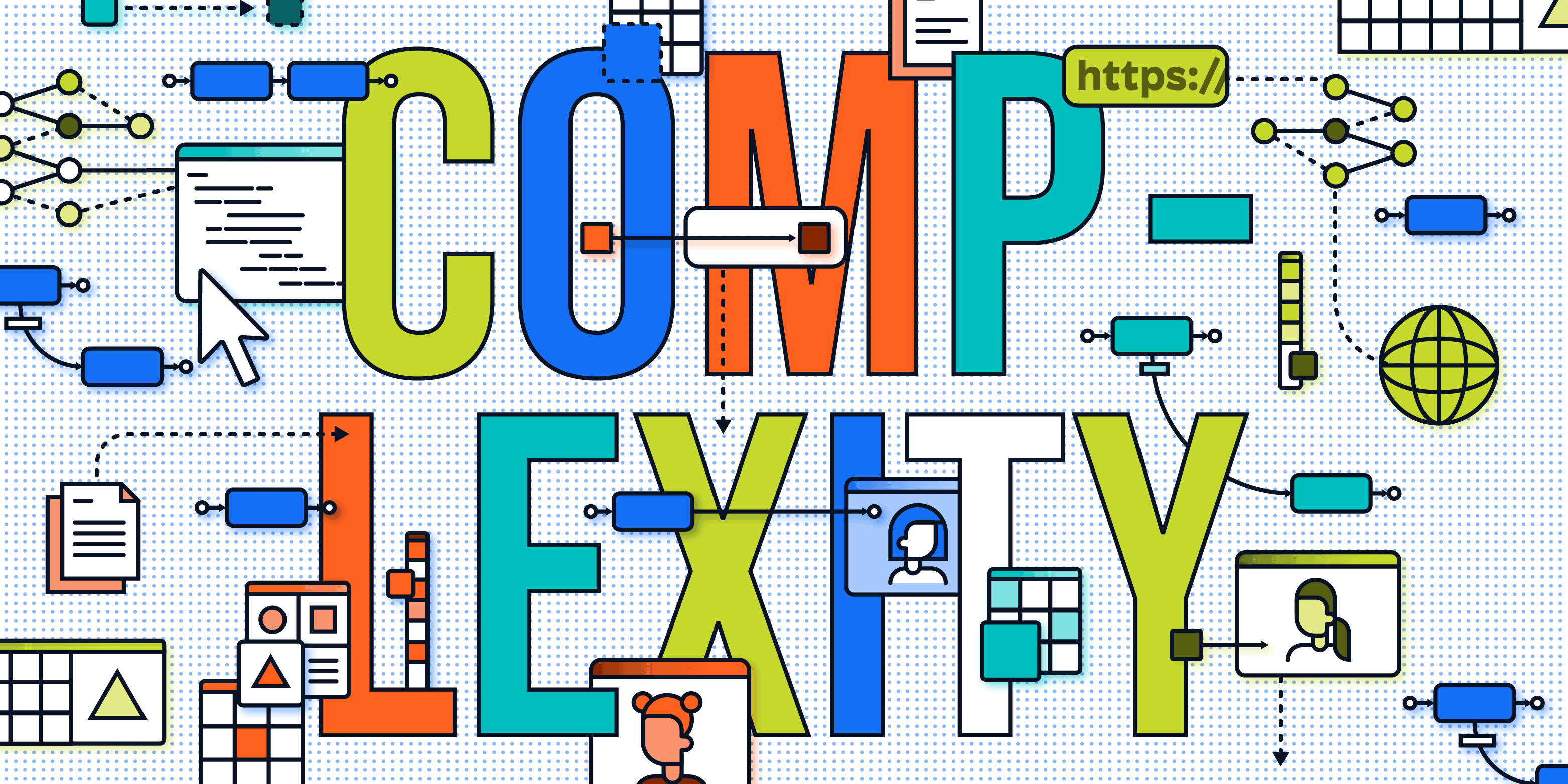
Generate Domain Models with Maia - Mendix 10.13
Mendix 10.13 Release
Build, deploy, and maintain high-quality applications with low-code
A well-defined application lifecycle is a systematic way to quickly create high-quality applications. The low-code application development lifecycle is divided into five stages: Ideation, Development, Testing, Deployment, Operations
Mendix’s low-code Platform supports businesses throughout these stages by abstracting and automating many of the complexities involved in traditional development.
Features include:
Because Mendix is collaborative and visual, businesses can leverage their company’s existing talent — no matter their level of development experience — to accelerate time to market and deliver applications users love, all at a reduced development cost.
Whether you’re building a portal with workflows and multiple integration or a native mobile application, Mendix provides the tools, support, and services teams need throughout all stages of the application development lifecycle. Plus, Mendix is open and extensible at every level, so you can easily leverage your existing tech stack wherever you need.
In the first stage, teams define the purpose and goals of the new application, evaluate user expectations, and build a shared understanding of all requirements. Additional tasks include gathering requirements, estimating costs, and allocating resources.
Throughout the application development lifecycle, it’s crucial for IT, business, and stakeholders to stay on the same page in terms of goals and requirements. Low-code’s strong focus on collaboration helps teams break down silos and keeps everyone connected.
What ideation with Mendix looks like:
As soon as requirements are gathered and plans are in place, application development can begin. Low-code is a visual and collaborative way of developing, and teams of varied skill sets can use it to build applications. This enhances developer productivity, accelerates time to deployment, promotes T-shaped teams, and makes it easier for non-technical stakeholders and users to stay involved throughout the application lifecycle.
What development with Mendix looks like:
Mendix ensures continuous collaboration between business and IT developers. Multiple developers can work and contribute to the same project, in parallel, without friction due to Mendix’s robust version control capabilities.
Mendix Connect facilitates secure data integrations with databases and systems using common methods like REST, SOAP, XML, and ODATA.
Mendix Assist, an AI-powered bot, provides real-time guidance for configuring logic and also measures application performance against best practices.
Mendix supports the development and reuse of various application components like UI, logic, and data. Also find application templates, application services, widgets, and more in the Mendix Marketplace.
This phase involves quality assurance and testing procedures to ensure that the application performs as needed by the business and as expected by users.
Mendix eliminates time-consuming challenges — resource depletion, limited testing coverage, and errors due to manual testing — to help teams deliver high-quality applications that exceed all expectations.
What testing with Mendix looks like:
Now it’s time to make your application available to end users. Low-code helps you ship solutions faster to your users while simplifying cloud operations. Mendix also makes it easy to deploy cloud-native applications to the cloud of your choice.
Containerization — packaging an application and its environment for deployment — is an integral part of low-code development. The process ensures that applications run reliably and consistently in different environments. Containerization also makes applications more resilient and easier to manage, leading to a lower total cost of ownership (TCO).
What deployment with Mendix looks like:
Once the application is released to the masses, the nurturing begins. The final phase of the application development lifecycle focuses on continuous monitoring and maintenance for long-term application health and usability.
Ongoing application maintenance and incremental updates are often time-consuming, but the Mendix low-code Platform simplifies operations and frees developers from tedious, repeatable tasks.
What operations with Mendix looks like:
Mendix’s low-code Platform is designed to align with the principles of Agile development, with features that provide the necessary foundation for DevOps practices.
From one-click deployment to built-in monitoring, Mendix helps DevOps teams work more iteratively and autonomously throughout the application development lifecycle. Standard DevOps tools and services are available by default or are fully automated in the Mendix Platform. Continuous integration and continuous delivery (CI/CD), testing, and monitoring are also included, and APIs are readily available to integrate your Mendix application with your existing DevOps tools.
Download our eBook to discover how low-code with Mendix can accelerate Agile practices through the entire application lifecycle process.
Register for our next live demo or browse on-demand videos to see Mendix in action.
Mendix 10.13 Release
What does complexity mean to you and for your enterprise? If we sat down with 100 IT leaders and asked, we’d probably get 100 different answers. So, let’s define “complexity” together. And who better than actual Mendix users?
The software development lifecycle (SDLC), also called the application development lifecycle, is the process of planning, developing, testing, and maintaining software and applications. The SDLC includes several project phases that must be clearly defined to ensure that the team understands their role and the goals of each stage of development.
Read more about the application development lifecycle in our Evaluation Guide.
There are several different software development methods: Agile, Lean, waterfall, iterative, DevOps, spiral, etc. The goal of these methods is to deliver high-quality applications quickly and cost effectively, but each will have its nuances.
Agile development focuses on delivering working applications as quickly as possible. This is achieved by responding and adapting to feedback and changes continuously throughout the entire development process, which requires a tried-and-true development process.
The phases of the Agile application development lifecycle include ideation, development, testing, deployment, and operations. There may be slight variations depending on the organization and the project.
Whether you’re building a mobile or desktop application, the development lifecycle begins with ideation, planning, and requirements gathering. Then, development can begin, followed by testing, quality assurance, and deployment. The final stage of the application lifecycle is operations and maintenance for continuous support.








